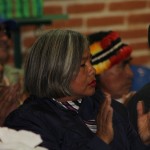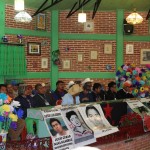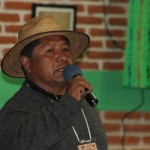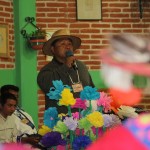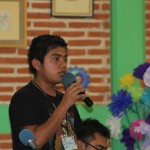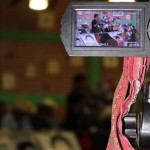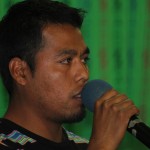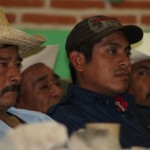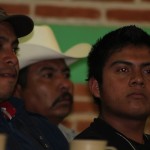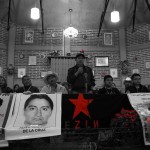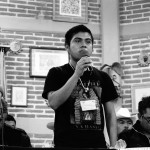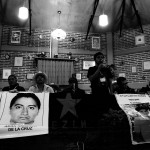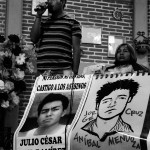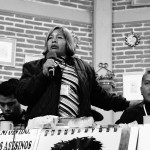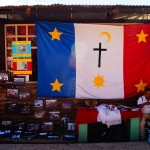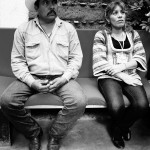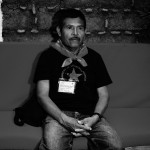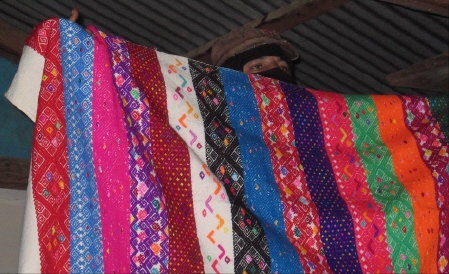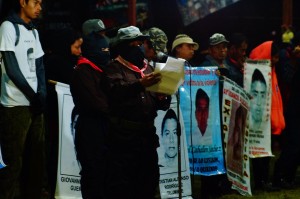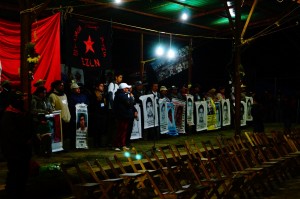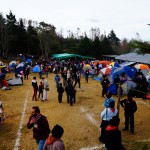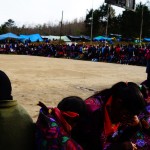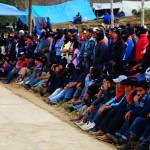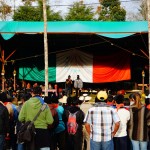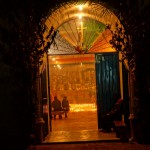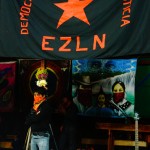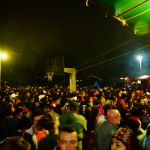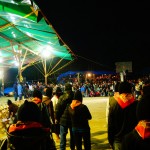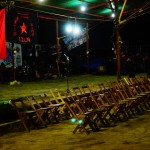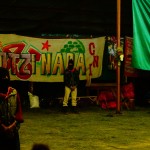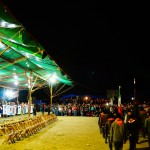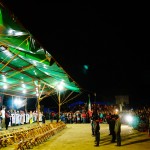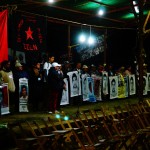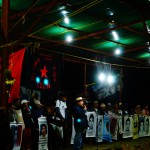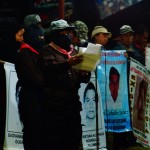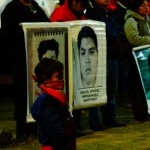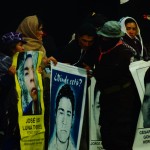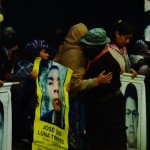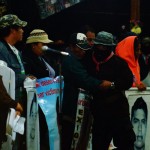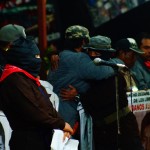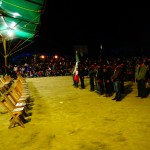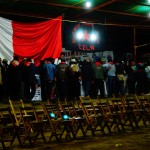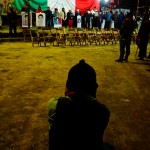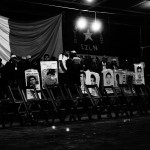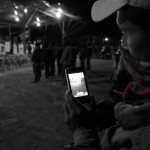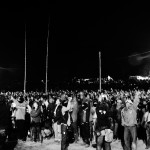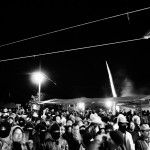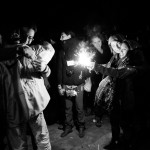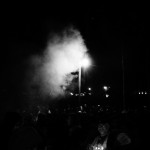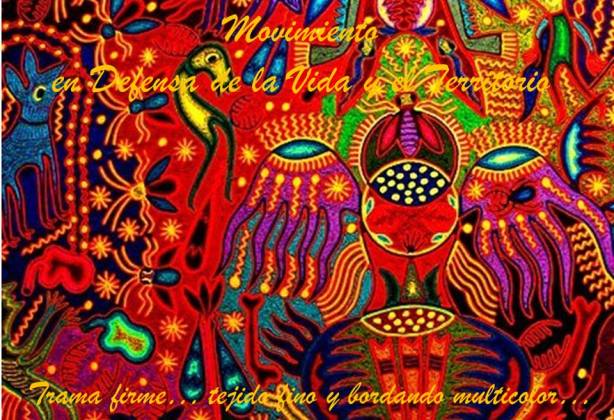
To the peoples of the world:
From Chiapas, Mexico, we send out our word to all those women and men from below, in the countryside and the city, in Mexico and throughout the world, all those who sow resistance and rebellion against the neoliberal capitalism that destroys everything.
We met in the Ñahtó community San Francisco Xochicuautla, State of Mexico, on December 21, 22, and 23; in the Nahua community of Amilcingo, Morelos, on December 22 and 23; in the space of the Frente Popular Francisco Villa Independiente in Mexico City on December 24, 25, and 26; in Moncolva, Campeche, on December 28 and 29; in the Zapatista Caracol of Oventik, Chiapas, on December 31 and January 1; and in CIDECI in San Cristobal de las Casas, Chiapas, on January 2 and 3. We met to hold “sharings,” which means not only to share, but also to learn and build together. These were “sharings” that were grown from the deep pain and rage that belongs to all of us due to the disappearance and murder of the students from the Rural Teacher’s College Raul Isidro Burgos in Ayotzinapa, Guerrero. This was a criminal act that reflects the politics of death that the bad government and the capitalists have pushed into every corner of the country and the world. These missing students are our disappeared, and we, as the National and International Sixth, the National Indigenous Congress, and the Zapatista National Liberation Army will not cease to struggle until they are found.
The capitalists and their overseers in the bad governments have left destruction in each of our individual hearts and great destruction in the collective heart that we make up as peoples, mothers and fathers of the young people who were taken from us, and solidarity organizations, all determined to reconstruct life where the powerful have sown death and mourning.
In the indigenous communities that we comprise, we suffer attacks by the capitalist system through the blood and pain of our children, who are also the only possible future for this planet we call Earth. Amidst the distances and different colors that make up our being and our existence, we maintain the certainty that Earth is our mother and she is alive. And in order to keep her alive, justice must be a demand that is woven by the actions and convictions of those of us who comprise the world of below, those who do not aspire to govern that world but rather construct it along our path.
From the oceans, beaches, mountains, cities, and countryside, we build and rebuild alongside the assemblies, organizations, and collectives that in diverse autonomous forms weave spaces and forms of organization and solidarity that are capable of containing the capitalist destruction that does not distinguish between peoples and colors and in its chronic blindness only recognizes what feeds the same production dressed as permanent war, unjust markets, and colossal profits for a few. These are values alien to our peoples and against the ancient agreements made with our Mother Earth that give meaning and sense to life in the world, that give us freedom and dignity, dignified in living and defending life.
But the capitalists who say they are governing but really are only trying to dominate, administrate, and exploit, have a limit—a very large barrier—when they come up against the dignity of a person, a family, a collective, a society who they have profoundly damaged, from whom they have snatched and killed a part of their heart, thus detonating an explosion of rebellion that has illuminated the World Festival of Resistance and Rebellion Against Capitalism which we call “Where those above destroy, we below rebuild.” Because we are below; from below we understand the world, from below we care for it, below we look at one another and from there, together, we rebuild the destiny that we believe is our own until the powerful snatch it from us and only then do we learn, do we know, that what is really ours is that which we can construct or reconstruct where capitalism has destroyed.
The pain that is converted into dignified rage in the families of the murdered and disappeared students of the Rural Teacher’s College Raul Isidro Burgos is the pain that has kidnapped and disappeared us also, and thus we will never stop struggling until they are found, along with all of the murdered, disappeared, tortured, exploited, disrespected, and dispossessed brothers and sisters, wherever they may be in this savage capitalist geography, on whatever border of the world, in whichever prison.
The walk of the peoples of the world in the countryside and the city, each with their path, are led by the footprints of their own ancestors, paths that divide, intersect, and cross with ours until they find one direction, marked by a rebellious dignity that speaks so many languages and has as many colors as nature itself, woven from small embroideries that together construct what we need to be.
So, brothers and sisters of this suffering world that is nonetheless happy because of the rebellion that nourishes us: we invite you to continue walking with a small but firm step, to continue to meet, share, construct, and learn along with us, to weave the organization from below and to the left of the Sixth that we comprise.
Only from our rebellion and our resistance will the death of capitalism be born and a new world brought to life, a world for all of us.
San Cristobal de las Casas, Mexico, January 3, 2015
NATIONAL INDIGENOUS CONGRESS, ZAPATISTA NATIONAL LIBERATION ARMY, and the NATIONAL AND INTERNATIONAL SIXTH
Originally Published in Spanish by Enlace Zapatista
En español: http://enlacezapatista.ezln.org.mx/2015/01/08/pronunciamiento-del-primer-festival-mundial-de-las-resistencias-y-rebeldias-contra-el-capitalismo/




